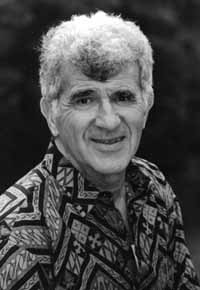TC Professor in Shanghai Ghetto Documentary
Sigmund Tobias, Distinguished Research Scientist at the Institute for Urban and Minority Education and Visiting Professor of Cognitive Studies in Education at TC, is one of the five former refugees who participated in the documentary film, Shanghai Ghetto, which ran from October 25th to 27th.
The film, which won an Audience Choice Award at the Santa Barbara Film Festival, describes how a group of European Jews found safety from the Holocaust in Shanghai, China, during the Second World War.
In 1939, thousands of Jewish refugees escaped Nazi persecution to the only place open to them-the Shanghai Ghetto. This feature-length film, narrated by Martin Landau, depicts the story with interviews of survivors and historians, stock footage, still photos, and footage shot in modern Shanghai, where most of the Jewish Ghetto remains unchanged. The music is by composer Sujin Nam and recorded with famous Chinese Erhu performer, Karen Han, who also played in Crouching Tiger, Hidden Dragon and The Last Emperor.
Tobias was born in Berlin, Germany. His family fled to Shanghai before World War II, where they found a safe haven during the war. He came to the United States in 1948 and settled in New York where he completed his education and received a Ph.D. in clinical psychology from Teachers College. Tobias returned to Shanghai as a Visiting Professor at the Shanghai Institute of Education, where he began a memoir describing the life of his family in the refugee community in Shanghai. The book was subsequently published as Strange Haven: A Jewish Childhood in Wartime Shanghai, University of Illinois Press, 1999.
Published Friday, Apr. 29, 2005
